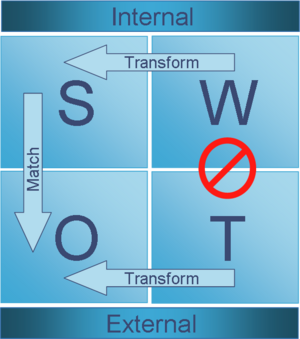The most reliable and scalable approach to finding new B2B customers is outbound communications–whether one is using mail, phone, or email, or using rented or purchased lists. B2B marketers typically select targets from prospecting lists based on such traditional variables as industry, company size, and job role/title. But new research indicates that B2B prospecting data is much more detailed these days and that it includes a plethora of variables to choose from: refining your targeting, for building predictive models, or picking your targets even more effectively.
My colleague Bernice Grossman and I recently conducted a new study indicating that B2B marketers now have the opportunity to target prospects more efficiently than ever before. In fact, you might say that business marketers now have access to prospecting data as rich and varied as that available in consumer markets.
To get an understanding of the depth of data available to B2B marketers for prospecting, we invited a set of reputable vendors to open their vaults and share details about the nature and quantity of the fields they offer. Seven vendors participated, giving us a nice range of data sources, including both compiled lists and response lists.

We provided each vendor with a set of 30 variables that B2B marketers often use, including not only company size and industry, but also elements like the year the company was established, fiscal year-end, Fortune Magazine ranking, SOHO (small office/home office) business indicator, growing/shrinking indicator, and other useful variables that can give marketers insight into the relative likelihood of a prospect’s conversion to a customer. We learned that some vendors provide all these data elements on most of the accounts on their files, while others offer only a few.
We also asked the participating vendors to tell us what other fields they make available, and this is where things got interesting. In response to our request for sample records on five well-known firms, the reported results included as many as 100 lines per firm. Furthermore, two of the vendors, Harte-Hanks and HG Data, supply details about installed technology, and their fields thus run into the thousands. The quantity was so vast that we published it in a supplementary spreadsheet, so that our research report itself would be kept to a readable size.
Some of the more intriguing fields now available to marketers include:
- Spending levels on legal services, insurance, advertising, accounting services, utilities, and office equipment (Infogroup)
- Self-identifying keywords used on the company website (ALC)
- Technology usage “intensity” score, by product (HG Data)
- Out-of-business indicator, plus credit rating and parent/subsidiary linkages (Salesforce.com)
- Company SWOT analysis (OneSource)
- Whether the company conducts e-commerce (ALC)
- List of company competitors (OneSource)
- Biographies of company contacts (OneSource)
- Employees who travel internationally (Harte-Hanks)
- Employees who use mobile technology (Harte-Hanks)
- Links to LinkedIn profiles of company managers (Stirista)
- Executive race, religion, country of origin, and second language (Stirista)
Imagine what marketers could do with a treasure trove of data elements like these to help identify high-potential prospects.
As a matter of fact, we asked the vendors to tell us the fields that their clients found most valuable for predictive purposes. Several fresh and interesting ideas surfaced:
- A venture capital trigger, from OneSource, indicating that a firm has received fresh funding and thus has budget to spend
- Tech purchase likelihood scores from Harte-Hanks, built from internal models and appended to enhance the profile of each account
- A “prospectability” score custom-modeled by OneSource to match target accounts with specific sales efforts.
- PRISM-like business clusters offered by Salesforce.com (appended from D&B), which provide a simple profile for gaining customer insights and finding look-alikes
- “Call status code,” Infogroup’s assessment of the authenticity of the company record, based on Infogroup’s ongoing phone-based data verification program
We conclude from this study that B2B prospecting data is richer and more varied than most marketers would have thought. We recommend that marketers test several vendors, to see which best suit their needs, and conduct a comparative test before you buy.
Readers who would like to see our past studies on the quality and quantity of prospecting data available in business markets can access them here. Bernice and I are always open to ideas for future studies. We welcome your feedback and suggestions.







